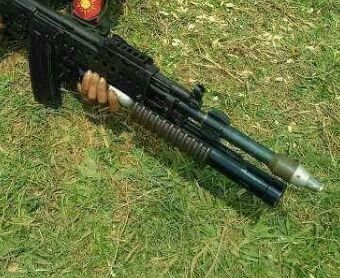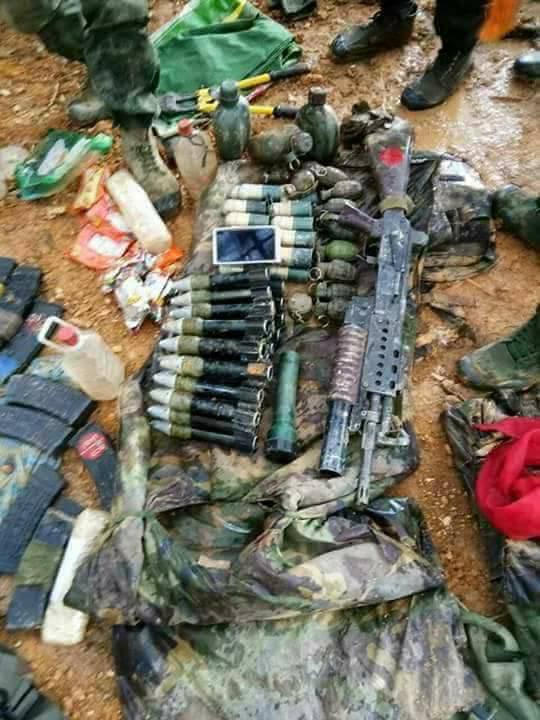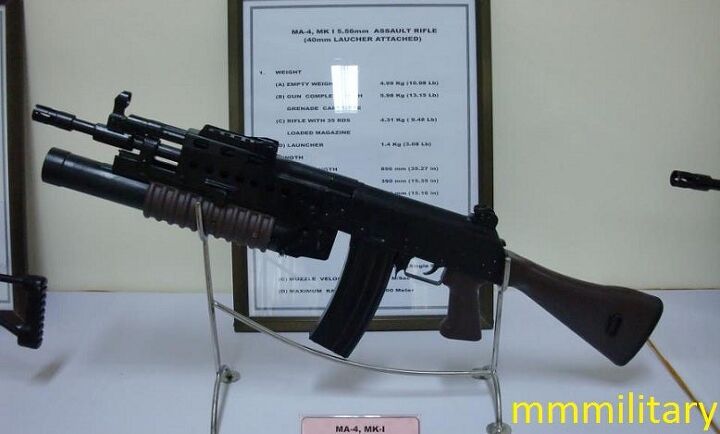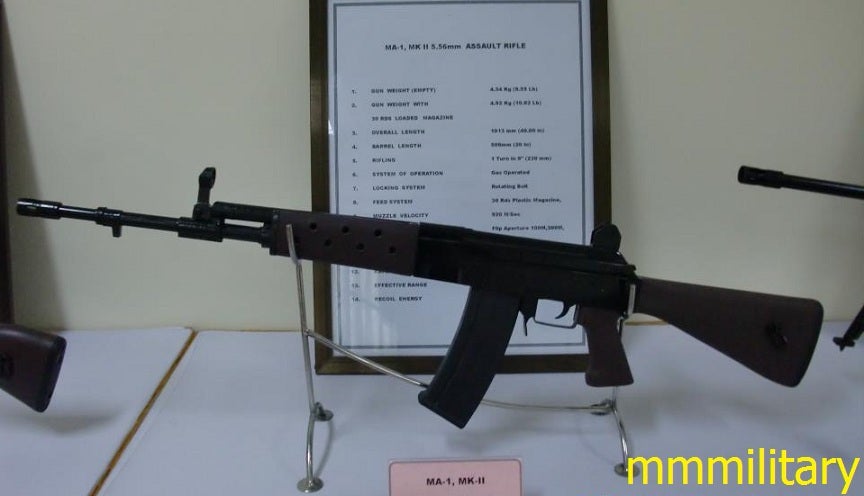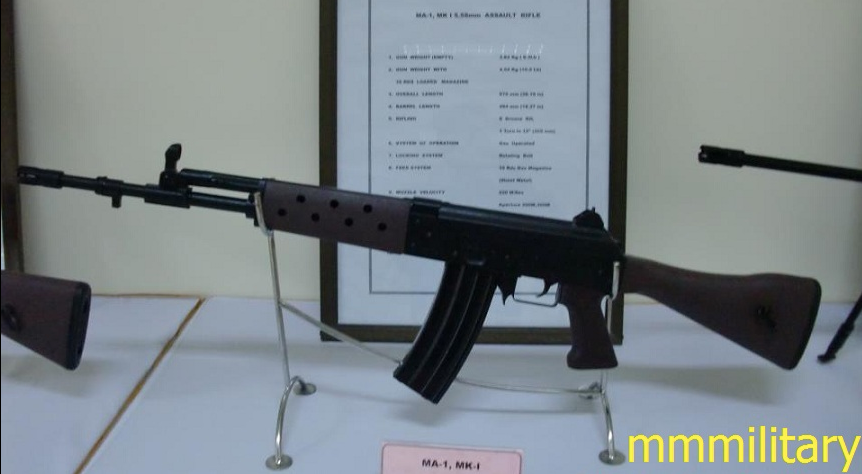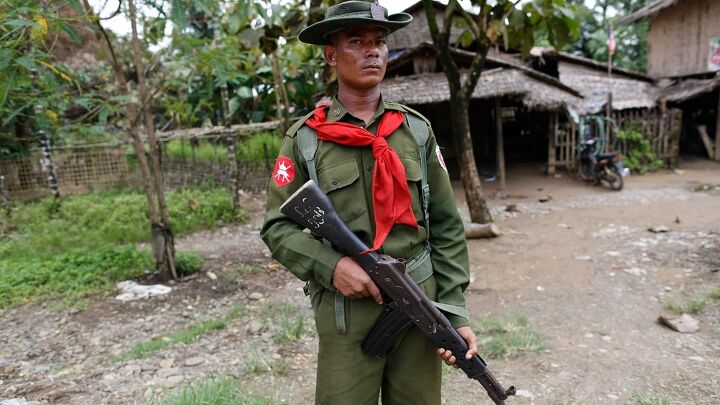Your enemy is the best teacher when it comes to combat. In a move that appears to be imitating what the Kachin Independence Army pioneered in 2010 when it comes to bullet trap rifle grenades being fired from locally assembled Type 81 derivatives (the Chinese Type 81 already uses one, but they tried a different method), Burmese Defense Industries has introduced a rifle grenade firing capable variant of the 5.56x45mm Myanmar Army (MA) family of infantry small arms (locally produced Galil ARM). At the current time it appears that the nomenclature of this variation is the MA MK II. Thus, MA-1 MK II (full-length rifle), MA-3 MK II (folding stock carbine), and the MA-4 MK II (UBGL variant). It most likely isn’t the case that the MA-2 has been retrofitted to fire rifle grenades as a light machine gun platform being used for that purpose is rare anywhere in the world. In addition, the MA-2 MK II is the new 7.62x54mmR variant of the LMG. In addition there has been modifications to the MA-3 carbine, but if the folding stock can withstand the recoil of the grenade isn’t known either.
Before identifying the MK II variants, we’ll first look at the rifle grenade being used. From afar it could be confused for a small mortar bomb, but the hollow opening at the base of the tube is the biggest giveaway to it being a bullet trap launched grenade instead of a mortar, which would have a primer at the bottom instead. Based on the size of the Chinese Type 81’s rifle grenade we suspect the tube might be of 45mm in diameter. It has
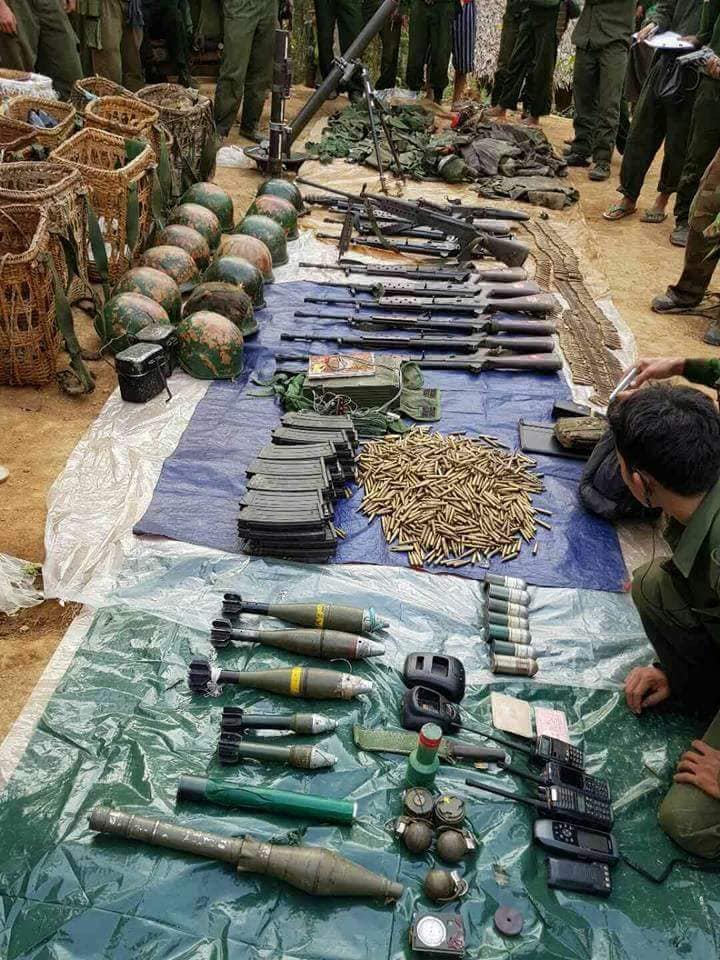
A good example showing captured Burmese materiel. The rifle grenade is between what appears to be an 81mm mortar round and a PG7-patterned RPG7 rocket.
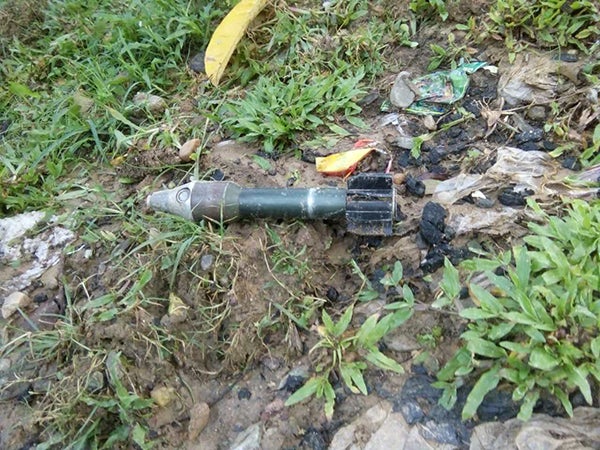
This is a fired version that didn’t explode on impact and is still live. Documented in an area of Tatmadaw attacks.

Note what appears to be a safety plug inserted into the grenade base as they are delivered to troops.
But why rifle grenades? Fighting in the dense jungles of Northeastern Burma can be very quick, very close, and very violent. By the time fire support in the form of 60mm or 81mm mortars can be summoned via a fire mission, the firefight is probably over and the insurgent combatants have melted into the jungle. Thus, having as much explosive fire support internal to a foot patrol is a quick and efficient answer to dealing with close threats that might be danger-close for the larger assets anyways.
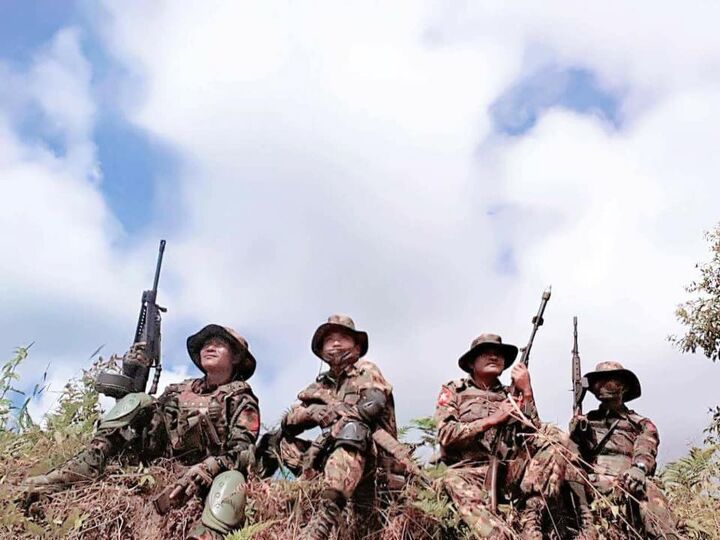
One of the only photos we can find with the rifle grenade mounted to the MA-1 in the field (ethnic areas). The drum fed LMG at far left is the MA-2 LMG. Bipods are M60 imitations.
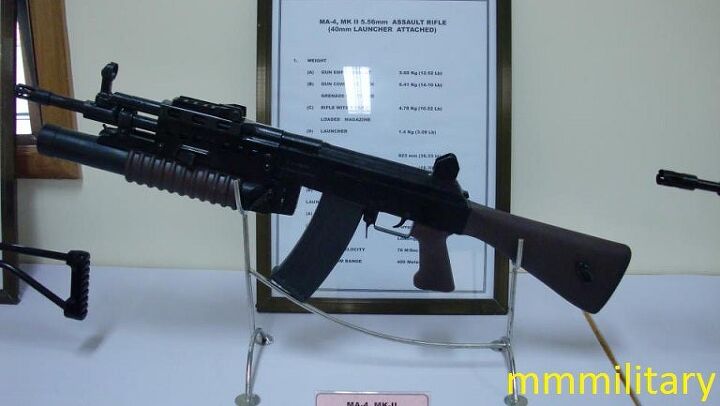
MA-4 MK II, optimized for the rifle grenade. Note the taller sights to compensate for when the rifle grenade is attached. Also note straight stock, 35 round R4 polymer magazine.
 Your Privacy Choices
Your Privacy Choices
